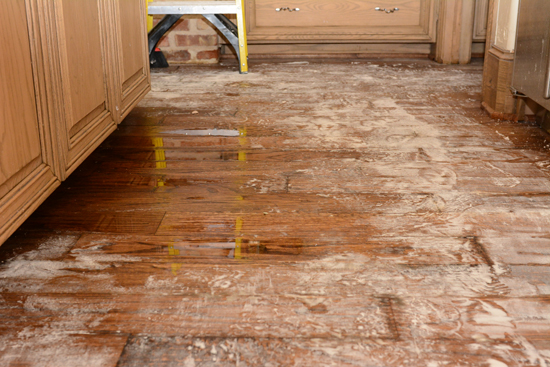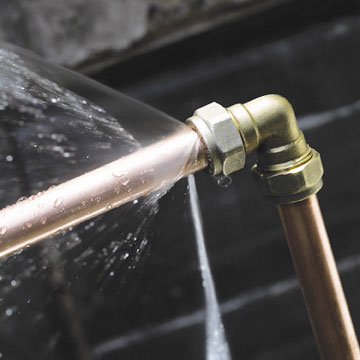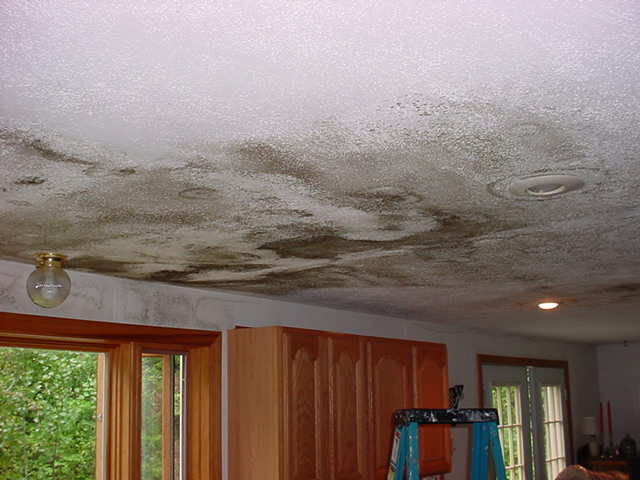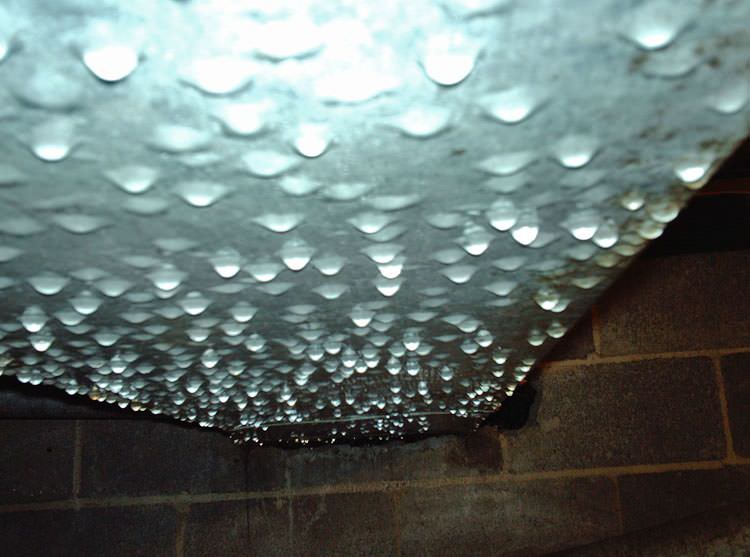Post-Flood Improper Drying: What Risks Your Home is Facing
Flooding can be a scary result from many different circumstances. Although with this years catastrophic Hurricane Season that has caused countless homes to be subjected to incredibly high flood-waters, there are things in every home that can cause flooding as well.
Just think of all the possible aspects of a home that are capable of causing flooding or some kind of water-damage, it may be something as small as nails in your roof that weren’t sealed, slowly leaking for years and years…. with nowhere for the water to go, your homes’ interior structure will soak it all up. It may sound harmless, but eventually, the damage will be visible on the interior of the home.

Water-Pipe Burst in Kitchen
Here are a few more examples of things in every home that can cause water-damage:
-
Plumbing that is either old, or wasn’t “winterized” properly,
-
Water-heaters or water-tanks that fail,
-
Sump-pumps that back-up,
-
Improper exterior drainage systems,
-
Central HVAC systems with too much condensation,
-
Faulty roofing,
-
Broken appliances,
As scary as this is, the list just goes on and on. The fact is, you don’t have to live in an area that is subjected to Hurricane season to be threatened by flood-damage. The threat is in every home, no matter where they’re located.
![]()

Burst Pipe

Roof Damage

HVAC Condensation
In this post, we’ll go over all the potential rinks you’re facing if you choose NOT to take the extra step and properly dry out your home after severe water-damage has occurred.
The extra step we’re referring to is during the clean-up process. This means after the excess water has been removed from the home. The lack of adequate ventilation after flooding has occurred creates the perfect breeding ground for a plethora of hazardous molds and fungal decay.
First, here are a few good tips if your home is ever subject to a flood or water-damage:
* Speed Drying – this is a way of using heaters and hot air to force the moisture out. (If you live in a tropical climate, however, this may not be the method you should choose)
* Dehumidification – The use of Desiccant Dehumidifiers is very common in flood restoration. (A Desiccant can be found made up of a variety of different chemicals, which is most commonly found as a solid, which absorbs all the moisture around it, and contains it, a common example of a Desiccant are the little packets of Silica that you may find in a new purse or pair of shoes). Another type of Dehumidifier that is commonly used is a “Heat Exchange Dehumidifier” which works by drawing air over a cold surface then the water is condensed and taken out of the atmosphere.
* Fresh Air – Sometimes, depending on a few factors, like where your home is located, and what time of year it is, simply opening all the doors and windows in the home can be very effective in speeding up the drying process.
Ok, so once you’ve taken steps to dry out your home, how do you know for sure, if it’s REALLY dry, and ready for new finishes? Well, one great tool we use on every flooring job we have is a moisture reader. They come in all different kinds, and are made to read the moisture content of each kind of material. Another way to help you know for sure if there is still high levels of moisture in your home somewhere, is to get a home inspection done. Chances are, if you encountered severe flood damage, and submitted it to your insurance agency, they’ll send someone to inspect and assess the issues. Damp materials in the infrastructure of any home will cause big issues over time. Serious structural damage can and will eventually occur like wood rot, making it a huge expense to replace and salvage, so taking the extra step In adequate drying is really important for the longevity of your home.
Besides the threat of the growth of toxic mold, which we’ve discussed in earlier posts, another great threat your home will face after flooding is the growth of Fungal Decay. The two most common forms of Fungal Decay are Wet and Dry Rot.
How to identify Wet Rot –
-A black fungus may appear on timber
-The timber is likely to feel soft and spongy to the touch with discoloration present If the decay has dried out the timber will crack and crumble easily
-The paint finish will be damaged it can be a sign of wet rot fungus, however in some cases, the paint can look okay underneath but may be rotting from the back.
How to identify Dry Rot –
– The fungus leaves deep cracks running across the grain of the timber with evidence of white sheets (known as mycelium growth) that are often present on the wood.
-When the fungus is exposed to light it can have a yellowish tinge look to it
-The timber will be brown in color and will crumble due to dry rot feeding on the timber.
-Damage is usually restricted to the timber however in some cases there can be large flat mushroom-like fruiting bodies that can easily grow through finishes such as plaster or paint.
Either one of these Fungal Decays, that are started by damp wood in your home, can lead to severe structural damage. Keep this in mind if you have plywood subfloors or wood beam construction in your home.
Dry rot is the most serious form of fungus decay in a home or building, it spreads onto and destroys much of the timber around it. On the other hand, the wet rot fungus occurs more frequently but is less serious, the decay is usually contained to where the timber becomes and stays wet.
The Wet rot fungus tends to grow on porous surfaces, for example, wood with a high moisture content of around 50% while for dry rot to grow, moisture of only around 20% needs to be present. If left untreated wet rot can cause major structural problems as it can lead to weakened timbers, causing flooring failure and basically a dangerous situation.
For moisture content to be suitable for wet rot growth there has to be a source of constant moisture – this could be as a result of defective plumbing or damaged guttering or an unknown roof leak. Wet rot cannot spread through masonry and will stop growing once the source of moisture is taken away. Wet Rot is commonly found in hardwood floors and subfloors underneath appliances, like old leaky refrigerators or dishwashers. Due to the parts of the home that tend to have the correct moisture levels, for example, sub-floor areas, dry rot can often cause significant damage before the homeowner is aware that there is even a problem with dry rot in the property.
5 Comments
Pingback:
Pingback:
Pingback:
Pingback:
Pingback: